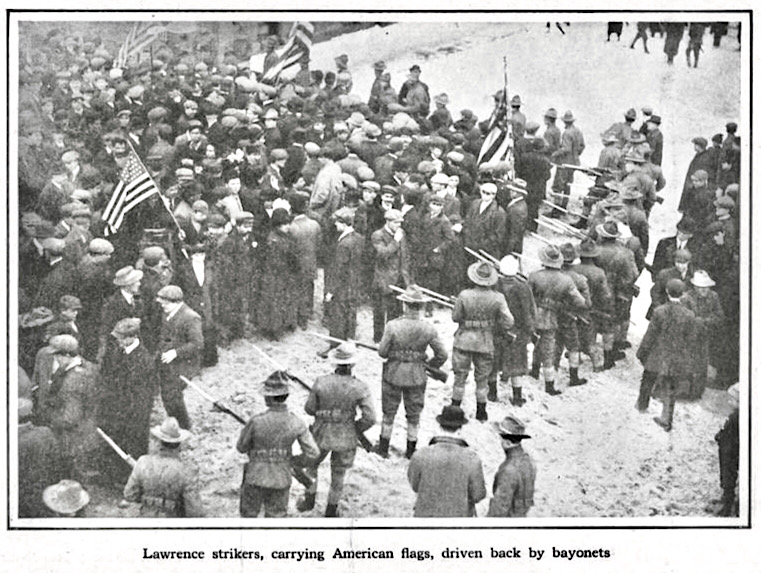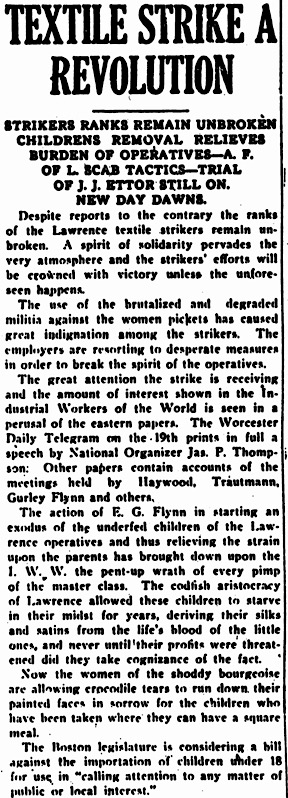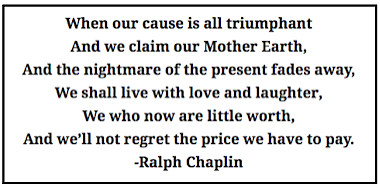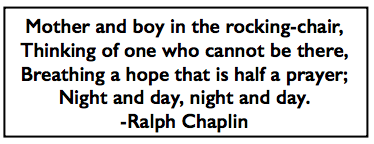 —————
—————
Hellraisers Journal – Sunday March 17, 1912
“The Trouble at Lawrence” by Mary Heaton Vorse
From Harper’s Weekly of March 16, 1912:
A few weeks ago a company of about forty children of the Lawrence strikers, bound for Philadelphia, were forcibly prevented from leaving Lawrence by the order of City Marshal John J. Sullivan. He was led to this act by the belief that some of those children were leaving town without the consent of their parents. Before this, several groups of children, to the total of nearly three hundred, had been sent out of town to the strike sympathizers in various cities, and public opinion against the departure of the children had been aroused. As Congressman Ames said: “The people here feel that the sending away of these children has hurt the fair name of Lawrence since it is a rich town and capable of caring for all its needy children without the help of outsiders.”
The forcible detention of these children had an extraordinary response throughout the country. It was one of those things that cannot be done in America without stirring up public opinion from north to south and east to west. There had been earlier aggressive moves on the part of the authorities: Joseph J. Ettor, one of the first to take charge of the strike on behalf of the Industrial Workers of the World, and Arturo Giovannitti, his chief lieutenant, were arrested and committed to jail without bail, as accessories to the murder of a woman [Anna LoPizzo], shot by a deflected bullet during a clash between the strikers and the police. Both men were two miles away during the conflict. Their imprisonment caused comment in the press, as did other episodes of the strike- for instance, the railroading of twenty-three men to prison for one year each, during a single morning’s police-court session, on the charge of inciting to riot; but in the minds of the country at large these things have been simply incidents. The abridgment of the right of people to move from one place to another freely was at once a matter of national importance. It had for its immediate sequel the sending of that touching little band of thirteen children of various nationalities to Washington to state their grievances and to testify as to what occurred at the railway station on that Saturday morning.



 —————
—————
 ———-
———-

 ———-
———-